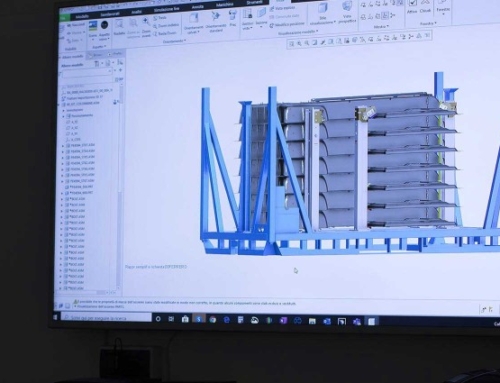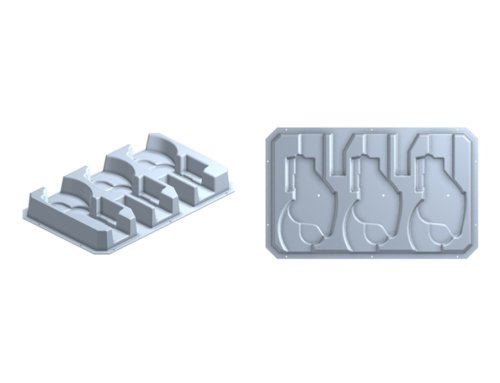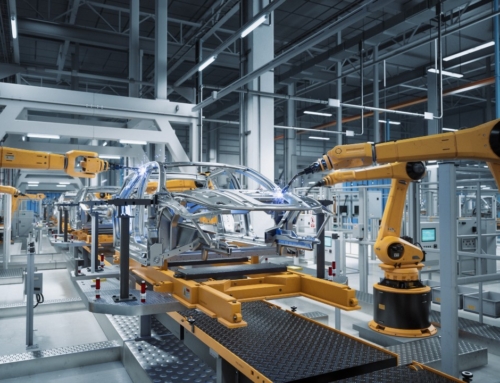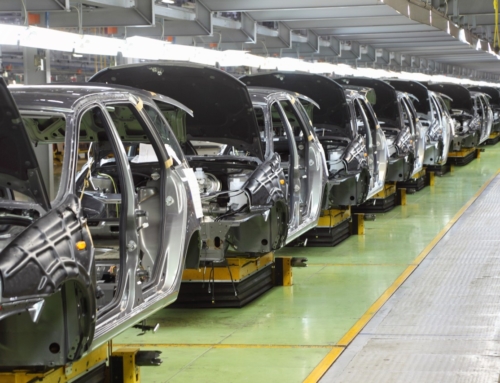Industrial trolleys: features and benefits for the automotive sector
The efficiency of industrial trolleys for the transport of specific metal racks and car components
In the automotive sector, operational efficiency is crucial to maintaining competitiveness and ensuring product quality. Internal handling trolleys are indispensable tools to optimize the handling and transport processes within production plants. These devices help not only to speed up and facilitate the flow of materials, but also to improve safety at work and integration with automated systems.
In this article we will explore the main features of industrial trolleys and the operational advantages they offer.
What are internal handling trolleys in the automotive sector and what are they used for
Internal handling trolleys are devices designed for the transport of metal racks and components within production facilities or warehouses. In the automotive industry, they play a crucial role in efficient workflow management and their main function is to optimize internal logistics by reducing handling times and minimizing the risk of damage.
Inside an automotive plant, internal handling trucks can be used for several key activities, including:
- assembly line refuelling: they transport the required components from storage areas directly to production lines, ensuring a continuous flow and reducing machine downtime;
- movement of finished and semi-finished products: once assembly is complete, the components must be transported to quality control, packaging or storage;
- management of returns and waste materials: the trucks facilitate the removal of defective or non-conforming materials, optimising disposal or recycling processes.
The characteristics of internal handling trolleys
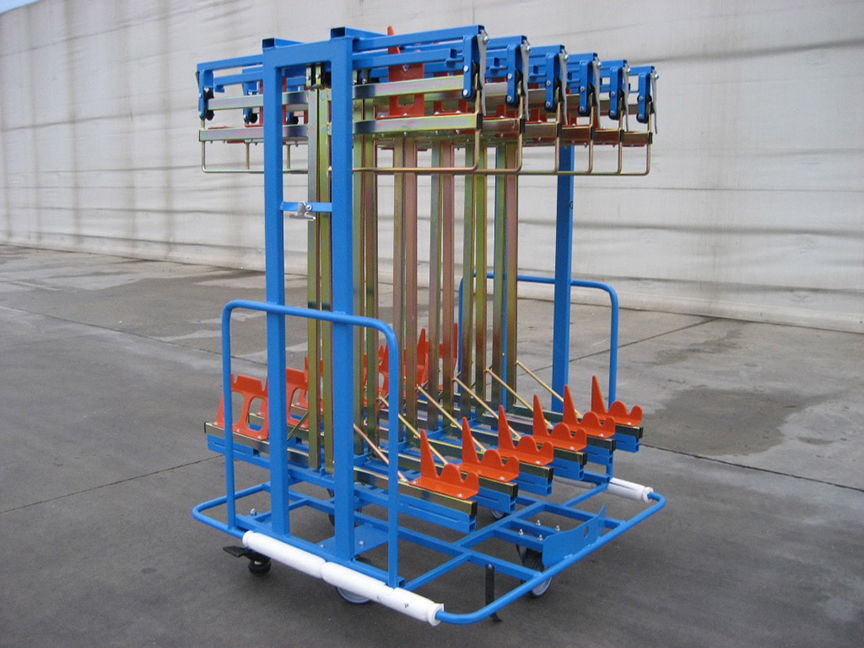
Internal handling trolleys for the automotive sector must have specific characteristics to meet the requirements of a dynamic and highly automated production environment.
First, they must be constructed with highly resistant materials such as high quality steel to withstand heavy loads and intensive use, and ensure long-term durability. They must also have a design specifically designed to handle specific types of racks and components, and wheels made of high-strength materials, which guarantee easy movement even in confined spaces, reducing operator fatigue.
Another very important aspect to consider is safety: trolleys must be equipped with reliable locking systems and brakes to prevent unwanted movement during loading and unloading. The ability to adapt or customize trucks to carry different types of components is also crucial in order to meet changing production requirements.
When it comes to high performance materials, steel is commonly the most used for its strength and durability. However, in some cases, lighter materials such as aluminium or special alloys may be used to reduce the weight of the trolley without compromising its strength.
The technologies integrated in handling trucks may include:
- RFID tracking systems: to monitor the position of trucks and transported materials in real time;
- load sensors: to ensure that the weight carried does not exceed safety limits;
- IoT connectivity: for integration with production management systems and predictive maintenance.
The adoption of these technologies allows a more efficient and safe management of internal transport and handling processes.
The advantages of industrial trolleys
The use of suitable industrial trolleys offers numerous advantages in the automotive sector, including:
- reduction of handling times: trolleys designed for specific needs allow to optimize the routes and loading/unloading operations, reducing material transfer times;
- improved safety: the use of appropriate trolleys reduces the risk of accidents related to manual handling of loads, contributing to a safer working environment;
- operational flexibility: the ability to adapt trolleys to different production needs allows for greater responsiveness to changes in demand or types of assembled products;
- reduction of operating costs: efficient management of internal handling helps to reduce the costs related to downtime, material damage and operational inefficiencies;
- compatibility with industrial automation systems: trucks equipped with advanced technologies can be easily integrated into automated production lines, improving synchronization and overall efficiency.
In summary, the use of correctly designed and implemented handling trolleys is a key element for the continuous improvement of production processes in the automotive sector.
Ferrero Automotive industrial trolleys on wheels
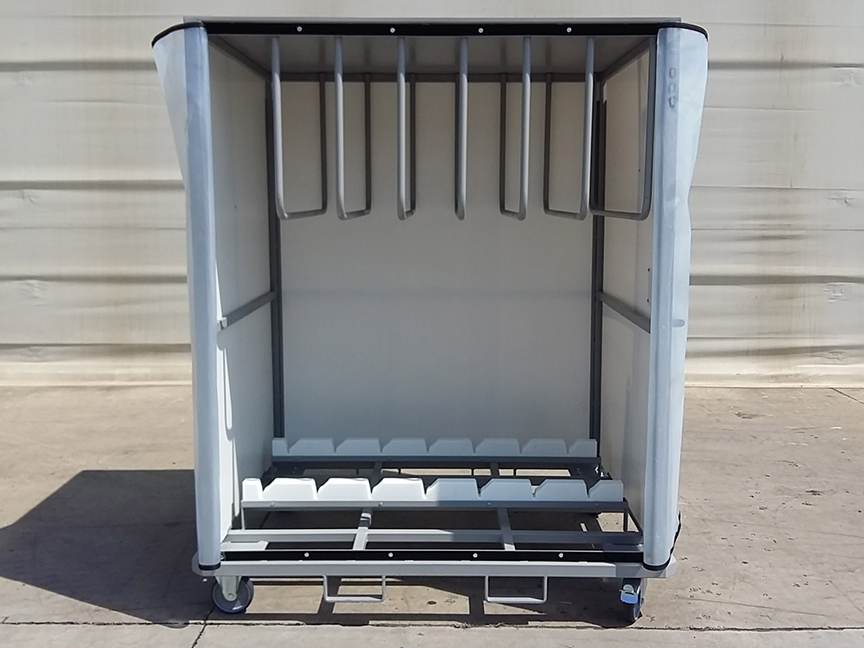
Ferrero Automotive specializes in the design and manufacture of industrial trolleys specifically designed to meet the needs of the automotive sector. Thanks to their special characteristics, they make it possible to facilitate and optimize the movement of metal racks along the line, meeting the specific needs of each production line.
Built with high strength materials and latest technologies, the trucks guarantee a long operating life even in intensive use conditions. Thanks to an adaptable design, they can be used for the handling of different types of automotive components and racks, both within production facilities and along assembly lines. Equipped with reliable locking systems and brakes, they ensure maximum stability during loading and unloading operations, preventing accidents and ensuring maximum protection of the transported components. The ergonomics of the design and the use of high quality wheels allow a smooth and precise movement, even on uneven surfaces.
Our team of experts is at your disposal to provide customized solutions designed to meet the needs of each company. If you want more information, contact us!



